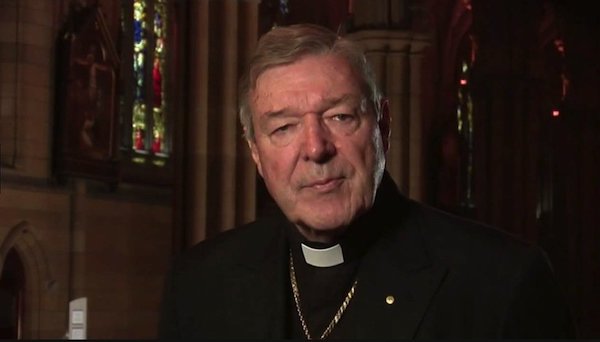Instead of considering the damage caused by enforced abstinence, the Church’s requirement for clergy to be celibate has made child sexual abuse all the more likely

Cardinal George Pell is the highest ranking Vatican official to face sexual assault charges.
One of the most senior Roman Catholic clergy in the world, a champion to conservative Catholics, has been charged with multiple sexual offences.
Cardinal George Pell, Australia’s most senior Catholic, was charged last month. He is the highest-ranking Vatican official to face sexual offences.
Australians are still in shock after an inquiry revealed that 7 per cent of the country’s Roman Catholic clergy abused children between 1950 and 2010, and in one religious order more than 40 per cent of the members were involved. More than 4,400 people claim to be abuse victims of the Catholic Church in Australia, according to The Royal Commission into Institutional Responses to Child Sex Abuse.
None of this should surprise Canadians.
There is hardly any part of Catholic Canada that has not been tarnished by child abuse cases. The same can be said for the United States, Britain, Ireland and elsewhere.
At the infamous Mount Cashel Orphanage in Newfoundland, for example, 300 children were abused by the Christian Brothers, a Roman Catholic religious order. In 2009 Bishop Raymond Lahey of Antigonish announced that his diocese had reached a $15 million settlement with abuse victims. Shortly afterwards Lahey himself was found to have child pornography. He pled guilty to charges in 2011. More troubling is that fact Lahey was observed by the Church to be in possession of child pornography as early the mid-1980s but was still made a bishop.
Sexual abuse is in no way confined to any one institution. It happens in families, sports clubs, schools and in religious institutions of all types.
But within the Roman Catholic Church it is made all the more likely for a number of reasons.
First, celibacy
There is no Christian requirement for clergy to be celibate. Even the Roman Catholic Church has wavered on the teaching over the centuries.
Some religious people are called to the priesthood and it deepens their faith and vocation.
But it’s also true that the culture of secrecy and lies in the Church when it comes to historical cases of sexual abuse, has been exploited by pedophile priests.
The image of the child-like cleric who has no sexual desire is a dangerous fantasy. In the Boston abuse crisis, in particular, many of the younger priests were some of the most horrendous abusers.
It’s also no secret that there are an enormous number of gay men in the Catholic Church. Many are, in fact, in consensual and loving same-sex relationships.
But instead of considering the damage caused by enforced celibacy, systemic homophobia and manic secrecy in the Church, the Vatican has made it impossible for any man who has had even a shadow of same-sex attraction to enter the seminary.
This stridently anti-gay policy has become even worse under the allegedly more liberal Pope Francis.
The absence of women in positions of power
All-male societies lack balance and tend to accentuate the worst of male sexual dysfunctions. One of the gruesome findings of various inquiries into sexual abuse in the church is how few priests came forward to report their concerns about what their colleagues might have been doing. Would women have been similarly silent?
The cult of clericalism and secrecy
There is a hierarchy in many institutions, but it’s especially pronounced when religion is involved.
In Roman Catholicism, the priest is the man who offers the body and blood of Jesus to the congregation during mass. He hears their confessions and gives absolution as the representative of God on Earth. He is often considered above and beyond criticism. The clerical class is to be obeyed and respected – and they in turn keep their authority to themselves.
In more conservative circles, they are especially insular. It is not for the congregation to know or to be consulted.
That has changed to a certain degree in the past 30 years but is still the overwhelming reality of Catholic life. The general response to criticism of the Church is to accuse critics of anti-Catholicism, even when that condemnation comes from within the church itself.
But with the latest revelations around Pell that card has been played too often and the assumptions of reverence and silence within Catholic culture are fading fast.
Put simply, abusive priests simply can’t get away with it the way they did for so long, so often. Alas, it’s still too late for many of the victims.
Complete Article HERE!
